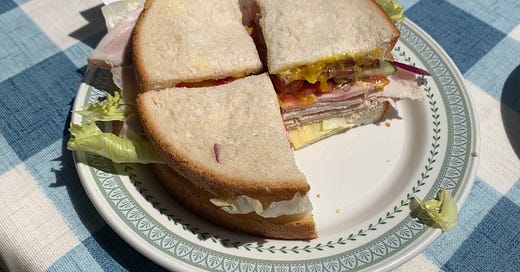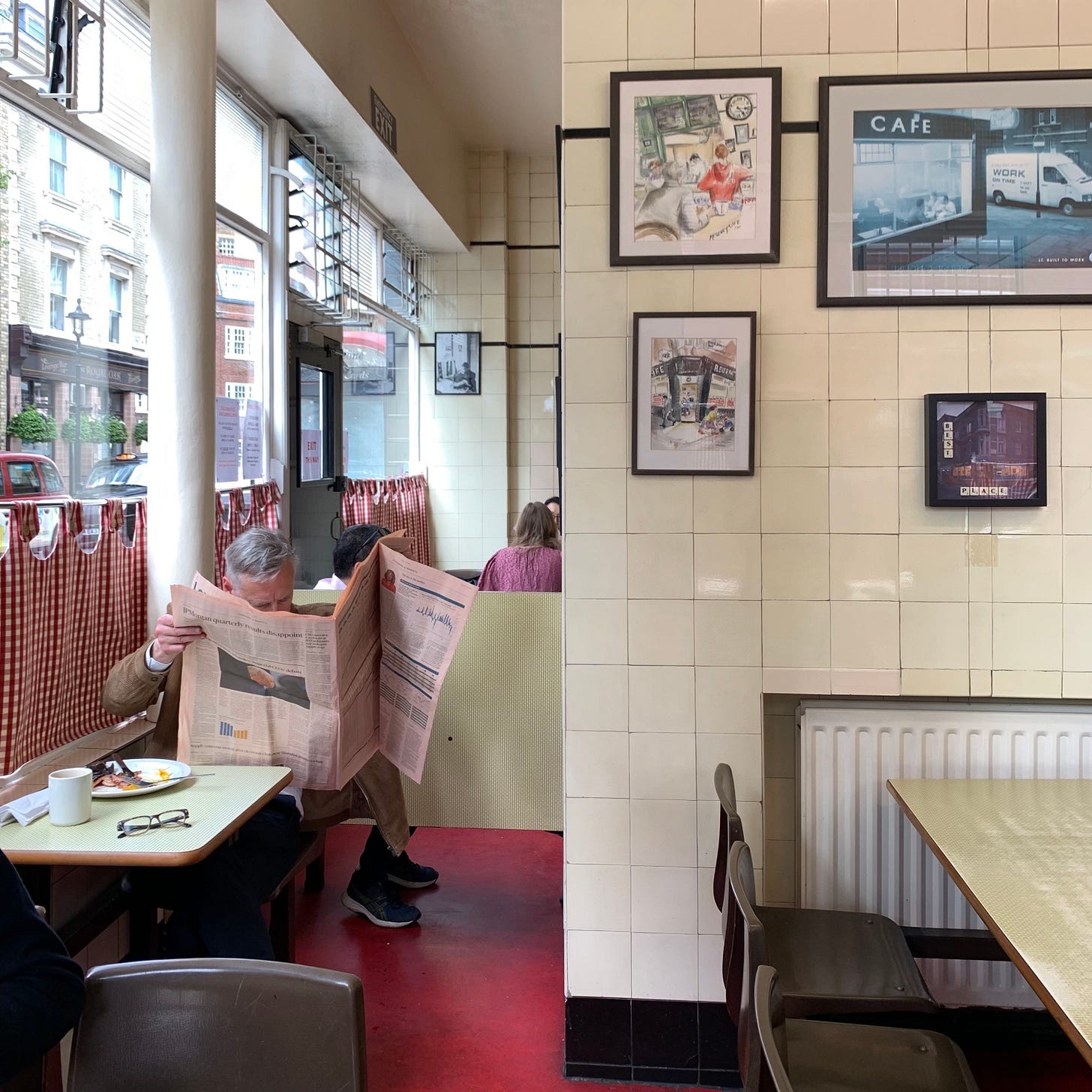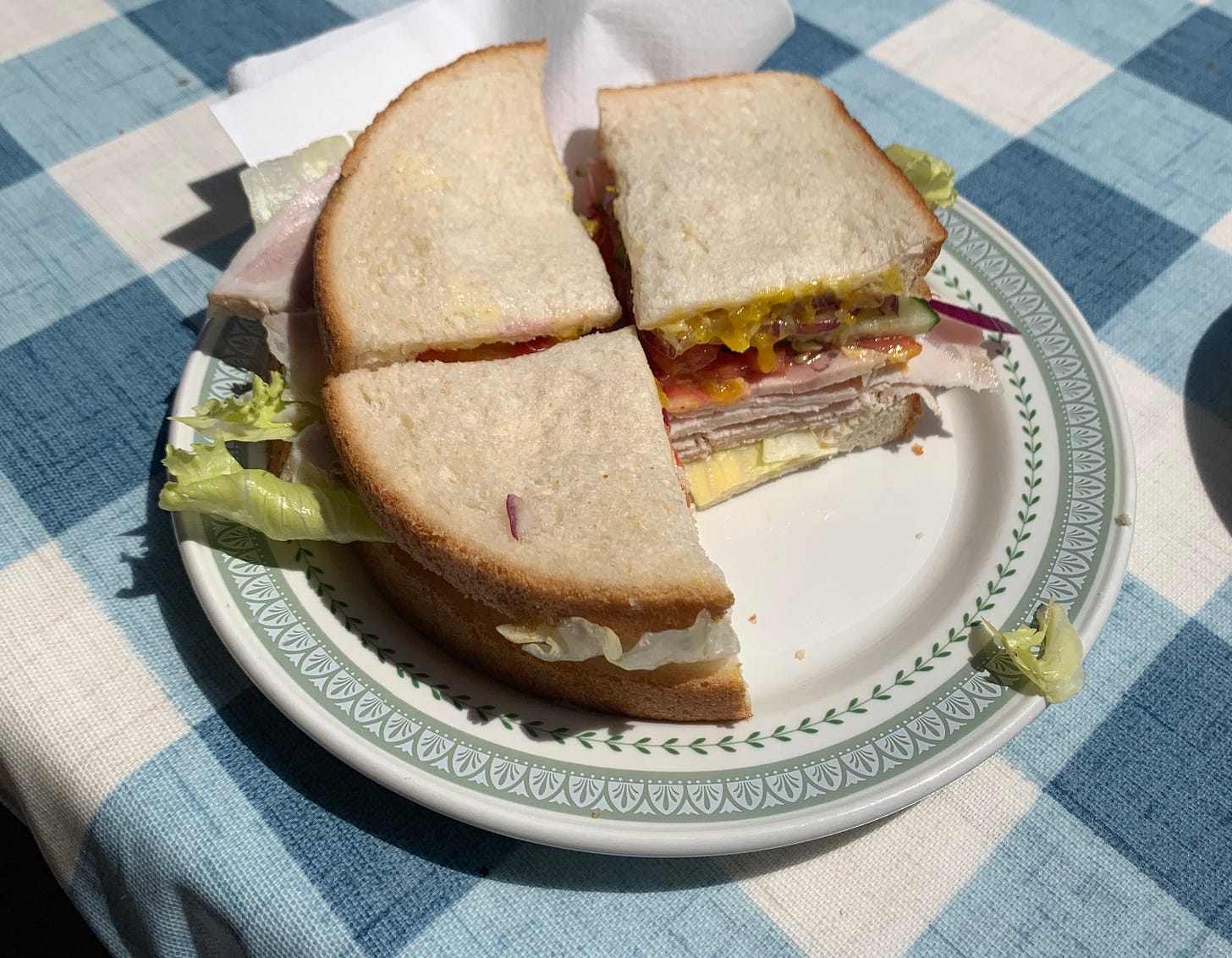My favourite London caffs part 1: Central
An introduction to this guide, plus 12 essential zone 1 caffs
Hello and welcome to the first issue of Wooden City, a newsletter about London.
If you haven’t come here via @caffs_not_cafes, I'm a writer called Isaac Rangaswami and this is my new Substack.
Over the next week, I’ll be publishing a three-part guide to my favourite caffs in the capital, covering 50 places in total. This issue introduces the guide and is all about central London spots.
On Wednesday, I’ll publish my favourites in east and west London, followed by north and south London on Friday. That final instalment will also include my first ever London-wide map, covering all 50 entries.
One problem with the word “caff” is that not everyone uses it. Often people in the UK call these places "greasy spoons”, but I prefer not to because that makes it sound like their spoons are greasy. Sometimes we simply call these places “cafes” (pronounced “cafés”) but I don’t think that word is precise enough, because it also means “coffee shops” and every other type of cafe around the globe.
To narrow things down and describe the category of tea and fried breakfast establishment we really mean, we put words like “traditional” and “British” in front of the word “cafe”. This makes sense, except when it doesn’t. We have immigrants to thank for making these proto-restaurants a reality, particularly the Italian people who started coming here during Charles Dickens’s day, and adapted their catering skills to the preparation of fried bread and tinned beans. If these places have a tradition, it’s the mixing of foreign customs with ones that were here already.
But can the word “caff” really capture all this? To some, it's only slightly less disparaging than the term “greasy spoon”. It’s also a Londonism and a colloquialism, that can make people who aren't working class sound like they’re pretending to be. But the word “caff” does have one great asset: it’s a single, unambiguous word. This also makes it easier to attach other words to it, like “modern” or “Thai”, without tying yourself in knots. That’s why I think it’s the best of a bad bunch.
In any case, I’ve been obsessed with these places for years now. And it’s the really historical ones that interest me the most. The creaky chairs, durable tabletops and reflective ceilings that live inside them hit me in the gut more than any museum exhibit ever could. In a very accessible, highly concentrated way, they capture what I love about London: its quiet layers of history, that are scattered all over the city and preserve traces of people who lived here ages ago.
Since there are so few of the really ornate time warps left, this specific category of caff has become more important. But I have lots of respect for younger spots too, particularly if they serve a specific community and have a character of their own. Regardless of a place’s age, what I’m always seeking is purpose and atmosphere. So when I decided to assemble a list of my favourites, those two key factors were constantly at the front of my mind.
Another important thing to note is that caffs mostly sell simple, straightforward food. So analysing it too much feels like punching down, especially when a place attracts customers mainly because it has a roof. I believe that basic food can be redeemed if a restaurant has a valuable local function, especially if it’s also really cheap. So when I mention food more explicitly in this guide, that’s usually because I think it’s doing something different, a cut above the general standard, or particularly good value.
I love caffs for a hundred reasons. And my primary aim here is to cover as many of them as I can, without overlooking the size and shape of this vast unknowable patch of land inside the M25. This project has been heavily influenced by Vittles’ pub, South Asian and ice cream guides, as well as Jonathan Nunn’s Eater London best-value guides, which have all made me want to travel to parts of the city I hadn’t been to before.
Like the guides that have inspired me, this one is intended to be used. So if you live in London, it should have at least one or two caffs near where you live. But my main hope is that it encourages you to take some long tube journeys too, simply because you like the sound of a place. And if I’ve missed somewhere you love, particularly somewhere over 50 years old, I’d love to hear about it, because I plan to do a follow-up in the future.
Scotti's Snack Bar
Scotti’s encapsulates everything I love about old caffs, from its crisp, hand-painted signage to the footworn floor tiles between its doorway and counter, their terracotta sublayer exposed by half a century of human traffic. This may be the most honest dining room in London, furnished everywhere with evidence that the same family has lived and worked here for decades.
Max and Al’s parents took over in 1967, so the place’s original mid-century decor is a bit older than that, but all these functional fragments of the past play second fiddle to the food. Max simply wakes up early, bashes some escalopes and roasts a few joints of meat, which emerge from the kitchen around the time they stop allowing you to order bacon rolls. Through a combination of small talk and avuncular charm, Al will coax out which sandwich filling you really want, before placing it between two slices of bread, alongside a smear of something sharp for balance.
38 Clerkenwell Grn, London EC1R 0DU




